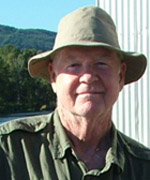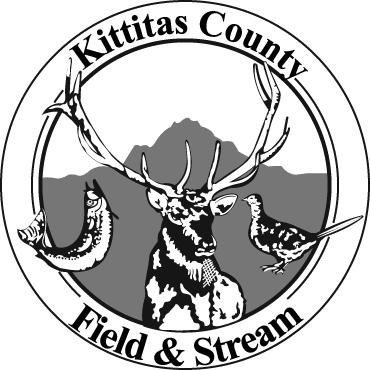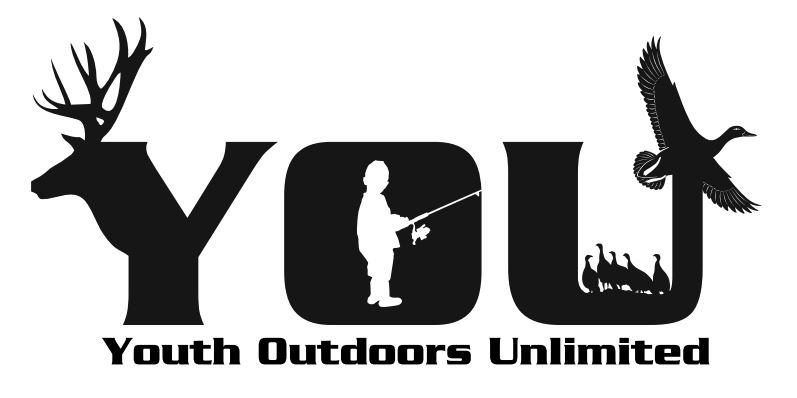Archive for January, 2019
About Skiing
ABOUT SKIING
A couple days ago, almost-four-year-old grandson Jonas and I took a drive out to Joe Watt Canyon to check out the elk and the sledding. Jonas found the elk to be “big and interesting,” but our two hours there was devoted to flashing down the few inches of snow on the hill, (mostly) intentional tumbles and a great deal of fresh air and laughing. As other family groups arrived, I started thinking about my decades of snow play.
It was alpine racing that wiped out my knees for a couple decades. In the 1950s – before effective release bindings – I skied on the Eastmont High School team, in East Wenatchee, Washington. On a fast, but fateful, meet day at Stevens Pass, at the last gate on my best run of the day, I caught a tip and lost it. Both feet were pointing more backward than forward by the time my old WWII Army skis came off my boots. No surgery in those days; just be patient and give my joints time to heal. Thirty years later, my knees no longer hurt after a day’s walk, but I still skied and raced every chance I had.
Through my TV and radio weatherman days in the Denver, Colorado, market, I took most of the annual Press Cup races. When I returned to Paradise late last century, I had largely lost the downhill bug. I still recommend skiing for kids and families, although sometimes I forget how much I have loved skiing – and even the word itself.
Skiing. The word slides from the mouth the way a skier lifts off a chairlift at the top of the day’s first run.
Skiing. The sound of skis clawing at the snow through a sharp turn.
Skiing carries magic, really, for earthbound souls who discover skiing’s freedom and for those who instruct them.
I once signed up for an instructor’s clinic at Colorado=s Copper Mountain. I wanted to downhill ski with the big kids, and took the clinic for training and a cheap weekend on the slopes. It changed my perspective on teaching, and on how some kids find magic in their lives.
Not long after that clinic, type-A skiing buddy Tom had his eleven-year-old daughter for part of winter break. She would come along on a day trip for alpine skiing at Loveland Basin. She was awkward, a bit overweight, angry, behind in school, and running out of friends. The girl needed a break; we were it.
At the bottom of our first run (“tumble” was more
appropriate for her) down a long intermediate trail, she was angry, frustrated
and doing her best to not cry. As I saw it, the problem revolved around a
general lack of self‑confidence, very little skiing experience and a father who
demanded that she keep up. We managed to get her on the chairlift, and as we
rode up to the top of a run she had no business skiing, my heart went out to
her.
At the top, I fumbled with my boots and told her dad to head on down. We’d meet at the bottom or up here again. As he tore off down the hill, she stared down the high intermediate slope, trembling. “Well, what’ll it be kid?” I asked. “You want me to get you to the bottom, into the lodge, or you wanna learn to ski?” In the most trembly little mouse‑voice I ever remember hearing, she said, “I don’t want to fall down anymore…”
I took her poles and we started with the most basic of basics – on a hill not meant for newbies. The first 100 yards took ten or fifteen minutes. Each step went faster, as she gained balance and confidence. The last couple hundred yards, she was on her own, giggling so hard she had tears in her eyes. The rest of the day she couldn’t wait to get to the top of a run – any run. She said she felt the way birds must feel when they fly.
We took her up three or four times, as I recal. A few weeks later, Tom=s ex‑wife wrote that his daughter was doing her best ever in school, and seemed to be attracting friends like a magnet.
Anybody who loves to ski has these kinds of stories. And Nordic (cross country) skiing instructors like Glenn Bandy, Carey Gaziss and Jeff Hashimoto can tell them all day long. I think it has something to do with the magic tucked inside the word “skiing.”
I was never the Nordic skier that Jeff, Carey and Glenn are, but I enjoyed it enough to compete a bit (I once beat Governor Dick Lamm in the Colorado Governor’s Cup 10K). Mostly, I loved moving across winter’s snow with an ability to control my speed and direction.
You can play, too, of course. No doubt, you read the recent Ellensburg Daily Record article about Jeff and Carey and their ten-year-old Ellensburg Ski Team program for youngsters from seven to 18. The kids who come to play have a wide variety of choices in cross-country practice or competition. Find our more at eburgski.blogspot.com.
Glenn, of course, is a long-time cross-country instructor at the Nordic Center of Summit East on Snoqualmie Pass – one of those instructors who has no bad days on the snow. If one happens, he just refuses to remember it. (If the snow melted away under his slats, he might just smile, with “Well, we had three great weeks..”) For info or private instruction call Glenn at 509-962-8084.
It’s winter out there. Go play.
Comments Off on About Skiing
You, Your Family and Amateur (HAM) Radio
It was another off-Reecer Creek meeting of the Reecer Creek Rod, Gun, Working Dog & Outdoor Think Tank Benevolent Association – this one in partnership with the regular meeting of the Rodeo City Radio Club and members of the Upper Kittitas County Radio Club. The agenda item around which most discussion and planning revolved was the demand for more trained amateur radio operators (HAMs) in light of increasingly urgent preparation for emergencies across Washington and much of the rest of the country.
Emergencies for which law enforcement, communities, agencies and citizens are preparing include fires, floods, severe storms and weather extremes, earthquakes and “The Big One” (that massive earthquake which lies ahead of us at some unknown moment in the Pacific Northwest).
Amateur radio operators have long been key to successful communication during such events. In recent years in our part of the world, HAMs provided critical communication around the power and communication overloads and losses following the Oso disaster, during wind storms and massive wild fires, search and rescue operations and local issues.
A number of law enforcement agencies across the country count on amateur radio operators to fill in communication gaps during emergencies and hold regular drills or exercises to train and maintain readiness. Indeed, in many rural areas of America, HAM radio folks ARE the emergency communication network. Here in Paradise, several mock disaster exercises have included amateur radio operators at key locations around the valley. You may recall that mock “mustard gas disaster” at the Fairgrounds a few years back, when more than 400 people from across the state polished skills and successfully responded. That was arguably the biggest mock disaster exercise in Eastern Washington history, and 18 HAMs were in the middle of it all. Over the past year, several regional emergency communication trainings/exercises have been held in eastern Washington. More are coming – next is 19 Jan. – to expand the response network and sharpen communication with Emergency Operation Centers on both sides of the Cascades.
As emergency trainings and preparations increase, HAM clubs across the state and elsewhere have various activities for members and families to remember the sheer pleasure of “playing radio.” Field days and providing communication for community events and runs (such as the Cascade Crest 100-Mile Run, the Yakima Canyon Marathon and the Teanaway Country 100) keep radio skills and knowledge of FCC rules sharp as participants enjoy tracking racers and keeping them safe.
I have often suggested that the single most important thing a family might do to take care of itself – once enough emergency supplies were laid in to last at least two or three weeks – was to get trained, licensed and geared up for amateur radio, to become an active HAM family.
I often get the response: “HAM radio? That’s your idea for keeping a family safe? How does that work?”
There is no shortage of quiet examples related to flooding and fires right here in Paradise over the past decade. You might hear about them one-on-one from a family member or rancher who was cut off from communication but got what they needed because they or a neighbor had radio communication. How many search and rescue operations – or days temporarily misplaced in the backcountry – could have been prevented if every group or person planning an outback adventure carried a pocket-sized radio and the training/license to use it? A licensed HAM always has a backup plan when stuck most anywhere.
HAM radio is decentralized. Take your radio and equipment into your yard, to a shelter or onto dry ground, set up your antenna, plug it into your radio and find whoever you need. You may have a mobile setup in your car. In most any emergency, there will be other HAMs helping. After some pretty basic training, a licensing exam, and a little practice, you will be able to reach out to other licensed HAMs in your neighborhood and across the planet.
Anyone can get a license and a call sign and be able to work radio contacts. There are three levels of licensing: technician, general and extra. We have two radio clubs in the county with regular monthly meetings. Similar clubs will be found almost anywhere you might go, with coaches, classes and plenty of opportunities to play HAM radio.
Cost varies, but you can be into a decent handheld radio and antenna for around a hundred bucks. For bigger bucks, you can set up a home station and antenna tower. Check out gear at Amateur Electronic Supply (www.aesham.com) or the Ham Radio Outlet (www.hamradio.com). You will also find books and CDs for any level of license study. ARRL (www.arrl.org) has a wealth of info about classes, online sample tests, clubs and much more. Our local clubs will be offering a licensing class soon (info from Bob Davis at 509-674-3972). Practice/coaching sessions and several opportunies exist for you to polish “playing radio” skills.
Club breakfasts are first Saturdays, 8 a.m. at the Copper Kettle in Ellensburg. Whatever other town you may occupy has a nearby HAM club, just ask around. Then come a meeting and learn more.
Your family can be far better prepared for what lies ahead. It’s fun, too.
Comments Off on You, Your Family and Amateur (HAM) Radio
Security and the New Year
Thus begins year 21 of our regular weekly meetings in this “Inside the Outdoors” space. It probably calls for a rendition of “Auld Lang Syne.” Or something.
And, here we go again. Another new year. Another fresh start. One more chance to think about what awaits us in the new, pure year.
“What shall we do with this shiny new 2019?” The question was on the floor of the year=s final meeting of the Reecer Creek Rod, Gun, Working Dog & Outdoor Think Tank Benevolent Association. “…And with all the chatter about national and personal security in these crazy times, how do we not spend too much time fretting over family, friends and country?”
There seem to be plenty of folks dealing with national security these days – with varying levels of agreement – but the part about personal security swept me back to a decades-ago afternoon I spent reminiscing with my late, favorite, uncle and aunt. When the subject turned to keeping home and hearth safe, and my longing for the days when we left our keys in our cars and front doors unlocked, they had a few thoughts. Uncle Ed, who may have spent too many years up Little Chumstick Creek out of Leavenworth, Washington, suggested that the only way a guy could be safe with unlocked doors these days is to have pet wildlife in the house. He figured a wolf, mountain lion, or badger would do the trick.
My Aunt Evy lost a purse to a snatcher a time before our sit-down, and had her own thoughts about that personal security business. She liked the wildlife idea, but needed something that would fit in her purse or a shopping bag, and was leaning toward a gila monster or rattlesnake. The trick, as she saw it, would be to find such a critter, and be cool enough to walk around with it in the bag hanging off her arm or shoulder. (Through the remainder of her life, she entertained the family by conjuring up one impractical and funny idea after another.)
Not long after that sit-down, I was invited to speak with the Central Association for Lifelong Learning (CALL). At that luncheon, we talked about looking at things from a little different perspective than “normal” (which I often enjoy doing). There, I raised that “chicken and egg” question: “What if the chicken is just the egg=s way of making another egg?”
The whole question of thinking outside the norm inspired Scotty Cahill (one of the key movers in CALL) to tell me the story of the home security system “Shorty” Hoerling had put in place in the middle of the last Century. Apparently Shorty was a Finn or Dane – Scotty wasn’t sure which as he’d been pretty young when their paths crossed. Anyhow, Shorty had a log cabin up Johnson Creek out at one of the fringes of our valley, and had some call for concern about others honoring his privacy. I never met Shorty, but I know I’d have liked him, and Uncle Ed would have given him a medal.
Seems Shorty had drilled holes in his base logs, and sprinkled wheat on the floor inside the door. Wheat, of course, brings mice on the run. Mice bring rattlesnakes. Rattlers react negatively when trod upon by almost anything. Word got around I suppose, and Shorty apparently managed to keep most of his belongings at home. I don’t see why this wouldn’t be effective today, but the RCRGWD&OTTBA Home and Holiday Security Task Force has asked the Lawsuit Prevention Group to rule on lawsuit probability before recommending it to the general membership.
Certainly, there are any number of simpler approaches to family and home security than those posed above – not many as creative, however. Be that as it may, many of my homey friends are seriously looking at options as we jump into 2019.
The question of what lies ahead for 2019 likely awaits a year-long response. For some reason, I have a pretty good idea what’s coming this next year. No doubt there will be surprises, but I cannot recall a year in which so many of the things about which I care are already on the 2019 docket.
Two books are in pretty good drafts at this point (one by a Texas rancher with a gift for telling a story – he has handwritten around a hundred novels).
Son James and son-in-law Chris and I have our Texas hog hunt and Wyoming deer and antelope safari on the schedule. Edward and others are on track for fishing and other outdoor adventure.
I have planned for my abundant preference points for moose, sheep, goat, elk and deer permits to be finally drawn. (I just know this is my year!)
I have an intention to get back to South Africa this summer.
Perhaps the most momentous – and absolute – outdoor event here in Paradise is that the Kittitas County Field and Stream Club will turn 100 years old during the early portion of 2019. Watch for – and join – the celebrations.
Ultimately, it’s up to us, isn’t it? Like fresh snow awaiting our tracks, this year lies undisturbed before us.
Here’s to 2019!







